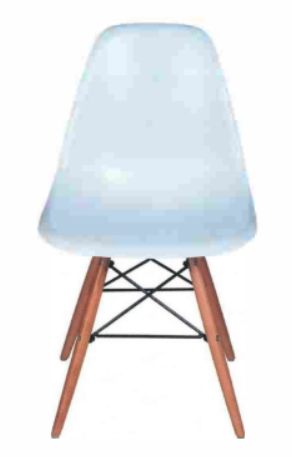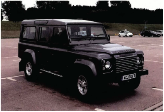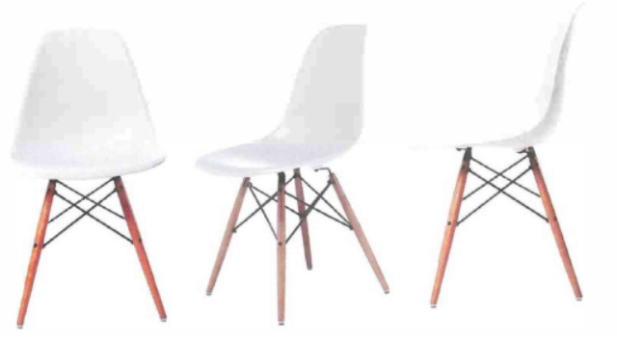In international copyright disputes, the Berne Convention (‘BC’) is often applicable. One of the main principles of the BC is that an author seeking protection in another country should be able to rely on the same level of copyright protection granted to nationals in that other country.
Article 2(7) BC provides for an exception to this principle with respect to industrial designs and models, as well as works of applied art. This may cause complexities, especially when the country of origin, where the work of applied art is first published, does not provide the (same) protection as the country wherein protection is sought.
The Dutch courts have interpreted article 2(7) BC in accordance with the principle of reciprocity: copyright protection in the Netherlands for works of applied art can only be granted if that work is also protected as a work of applied art in the country of origin.
Recently, two cases have been rendered by Dutch courts, one by the Dutch Court of Appeal of Arnhem-Leeuwarden and the other by the Dutch Supreme Court (Hoge Raad der Nederlanden). The cases are worth discussing, as they both appear to be divergent in their approach to article 2(7) BC.
Court of Appeal of Arnhem-Leeuwarden: Jaguar Land Rover v. Ineos
The first case concerns two parties of the automotive industry, with the appellant being Jaguar Land Rover Limited (‘JL’) and the defendant Ineos Automotive (‘Ineos’). Both parties are domiciled in the UK.
On appeal (in summary proceedings), the three-dimensional design of the exterior of the Land Rover Defender is at stake. JL claimed that by virtue of the BC, it can rely on copyright protection in the Netherlands and would thus be able to enforce its rights against the design of the Grenadier, an off-road vehicle manufactured by Ineos. Both exteriors are depicted below.
In assessment of the claim, the appeal court firstly rules that the BC is applicable since both the Netherlands and the UK are party to that treaty. Secondly, the court holds that the Land Rover Defender must be considered a work of applied art, to which article 2(7) BC applies.
Following earlier Dutch case law, the appeal court considers that application of article 2(7) BC would mean that protection in the Netherlands could only be granted if the Land Rover Defender is protected as a work of applied art in the UK (being the country of origin).
JL refutes the validity of this interpretation and argues that it would result in a form of discrimination on the basis of nationality, which is prohibited under article 18 of the Treaty on the Functioning of the European Union (‘TFEU’). According to JL, the principle of reciprocity could effectively put Dutch nationals (who can benefit from copyright protection in the Netherlands for works of applied art) in a better position than UK nationals (if these nationals fail to demonstrate that the work of applied art is also protected in the UK), which is a form of discrimination.
The appeal court dismisses this argument. It finds that article 18 TFEU no longer applies, due to the UK having permanently left the EU since 31 January 2020. In support hereof, the court refers to the Trade Treaty that was concluded between EU and the UK (signed on 30 December 2020 and not to be confused with the Exit Agreement). The Trade Treaty confirms, in article IP.6, that the BC and the exceptions mentioned therein will once more apply after the transition period of 1 January 2021, although article 2(7) BC is not explicitly listed as such an exception. Based on the Trade Treaty, the appeal court establishes that the principle of reciprocity may apply to UK nationals.
In answering the now material question whether the Land Rover Defender would actually be protected in the UK, the appeal court examines several legal opinions submitted by the parties, each supporting a different view. Due to this, the court finds itself unable to answer with certainty if UK law would grant protection to the exterior of a vehicle as a work of applied art. The court therefore concludes that in absence of having the required degree of certainty (within the context of summary proceedings), it must assume that the Land Rover Defender would not be protected in the UK and subsequently, as a result of article 2(7) BC, JL cannot invoke copyright protection in the Netherlands.
Supreme Court: Vitra v. Kwantum
In the case before the Dutch Supreme Court, the dispute centers on the Dining Sidechair Wood, a chair designed by the American couple Charles and Ray Eames as depicted below. The designs by Eames are renowned throughout the world and several models of their collection, such as the Lounge Chair, can still be spotted in many homes today. Vitra is a Swiss company that was assigned the rights to the Dining Sidechair by the daughter of Charles and Ray Eames. Vira now produces and sells the Dining Sidechair in multiple markets, including the Netherlands and Belgium.
Kwantum is a Dutch competitor that also sells furniture in these countries, including the below depicted Paris chair.
 |
| Top: Dining Sidechair Wood by Eames Bottom: Paris Chair by Kwantum |
Vitra held that the Paris chair by Kwantum infringed the rights on the Dining Sidechair and brought the case before the Dutch courts. In the previous instances, a complex discussion arose whether under US law the Dining Sidechair would effectively be protected (i.e. would this specific chair be copyright protected) or if it would be eligible for protection (i.e. could chairs in general, as work of applied art, obtain copyright protection). In the end, the Court of Appeal of the Hague ruled that for the purposes of article 2(7) BC, being eligible for copyright protection would be sufficient.
Surprisingly, the Dutch Supreme Court now questions altogether if the earlier adopted principle of reciprocity can be justified through article 2(7) BC.
The Supreme Court was brought to this doubt due to the RAAP-case by the CJEU (case C-265/19). In this decision the CJEU had to rule on a provision on neighboring rights in the WIPO Performances and Phonograms Treaty (WPPT). The WPPT contains, in article 4(2) a similar exception as article 2(7) BC, due to which it was believed that the right to a single equitable remuneration could be limited towards third states and only granted to EEA nationals.
In the RAAP-case however, the CJEU ruled (points 85-91) that national legislation alone cannot limit the right to remuneration to mere EEA Member State nationals and that instead, insofar the reservations or limitations on remuneration of the WPPT were to be relied on, they had to be set out in formal EU legislature (in accordance with the EU charter).
Because of this, the Dutch Supreme Court is unsure if instead of specific EU law setting out what limitations should apply to whom, article 2(7) BC can be the suitable legal basis for limitations introduced by the national Member States themselves:
[…] the RAAP judgment raises the question if EU law, in particular Art 52(1) of the Charter, also requires, for the limitation of copyrights for a work of applied art due to the reciprocity [principle] of Art 2(7) BC, that this limitation be made by law, which subsequently requires that the legal basis allowing the interference with that right must itself clearly and precisely determine the extent to which the exercise of that right may be limited.
Moreover, it can be inferred from the RAAP judgment that it is solely for the EU legislator (and not national legislators) to determine whether the copyright in a work of applied art in the EU can be restricted by application of Art 2(7) BC with respect to a work of applied art originating from a third country whose author is not a national of an EU Member State and, if so, to set out that restriction in a clear and precise manner. As EU law currently stands, the EU legislator has not provided for such a limitation on exercising copyrights in a work of applied art. The consequence thereof could be that, as long as this is not provided for, EU Member States may not apply the reciprocity [principle] of Art 2(7) BC to works of applied art of third-countries whose author is not a national of an EU Member State.” (informal translation by me)
The Supreme Court then formulates three preliminary questions which it intends to submit for a preliminary referral to the CJEU. Before it does so, Vitra and Kwantum are first invited to comment on the questions. An actual referral is therefore not to be expected before the end of this year.
Comment
The newly casted doubt of the Dutch Supreme Court on article 2(7) BC causes uncertainty and inevitably affects the ruling in the Land Rover case (which was rendered just two weeks earlier), where the appeal court had established that the principle of reciprocity applies to the UK. It seems likely that Jaguar Land Rover will appeal to this decision in anticipation of the potential referral to the CJEU.
If preliminary questions are indeed submitted to the CJEU, the outcome thereof may be significant to all non-EEA countries, in particular those where works of applied art are not protected by copyright. Moreover, it seems likely that in such a ruling, the CJEU will also clarify the scope of the Trade Treaty with regard to the Berne Convention and article 2(7) thereof.
What the outcome of the Dutch quandary will be remains to be seen, but future debates on the BC are surely to be expected.







![[GuestPost] G1/24: Tuning in! A take on the state of proceedings before oral proceedings](https://blogger.googleusercontent.com/img/b/R29vZ2xl/AVvXsEjZhEivE5bp7QOwZsyZXAXbVNYSmLjUthkB2Q7fm1_dpB97u5lIQeyWT9ZadUTAH3Z-hXn13VpW4vBDRPx9emCnoDV6tbUTkyvfmqPv1nNInL8XMdrAtSZ2hcRQr2LjxKovC9wTk_XyZxQ0CtX1MUrO_Muz3OJ4ld8AftymsdUmKD7xNksYMwk6/s150/Picture%201.png)
![[Guest post] ‘Ghiblification’ and the Moral Wrongs of U.S. Copyright Law](https://blogger.googleusercontent.com/img/b/R29vZ2xl/AVvXsEhxl1BQBAW3Y-asjb1xXB9eA4DYy77fky6WgR-prC-_6DeBbDqOgCUDWyiz0Q3B23MWWAXnkbS2H2js7OUwA0JQXAHmsyVFgGIHeJz7zJ791vTzOD-4SJqWFIuywFXQyd3ahybbdZd4e8IEVfcNqctvyR8lumv_Gix6Tsw5cSvbHpTI1nwvztDuAQ/s150/IMG_2179.HEIC)


![[Guest book review] The Handbook of Fashion Law (with a discount code)](https://blogger.googleusercontent.com/img/b/R29vZ2xl/AVvXsEgB4h2AdqJKwq9O3Ft4Mb7C39tv_NeFpkzrOfvhIsuwAkM_ops2Hgj7fdwzq_TQsjQDvQrQa-yyC9Q9pNiugseXRlUaMdsr_cmYUbh9lH8HDECMCbsTuNboVgpafyEhkgDkVS6ruHkuz8Sx0QVGI_1S8R9kbsHdNIYrRjqhyphenhyphen010_txjJUYvlZOtWA/s150/Fashion%20Law%20Book%20Bicture.jpg)







No comments:
All comments must be moderated by a member of the IPKat team before they appear on the blog. Comments will not be allowed if the contravene the IPKat policy that readers' comments should not be obscene or defamatory; they should not consist of ad hominem attacks on members of the blog team or other comment-posters and they should make a constructive contribution to the discussion of the post on which they purport to comment.
It is also the IPKat policy that comments should not be made completely anonymously, and users should use a consistent name or pseudonym (which should not itself be defamatory or obscene, or that of another real person), either in the "identity" field, or at the beginning of the comment. Current practice is to, however, allow a limited number of comments that contravene this policy, provided that the comment has a high degree of relevance and the comment chain does not become too difficult to follow.
Learn more here: http://ipkitten.blogspot.com/p/want-to-complain.html